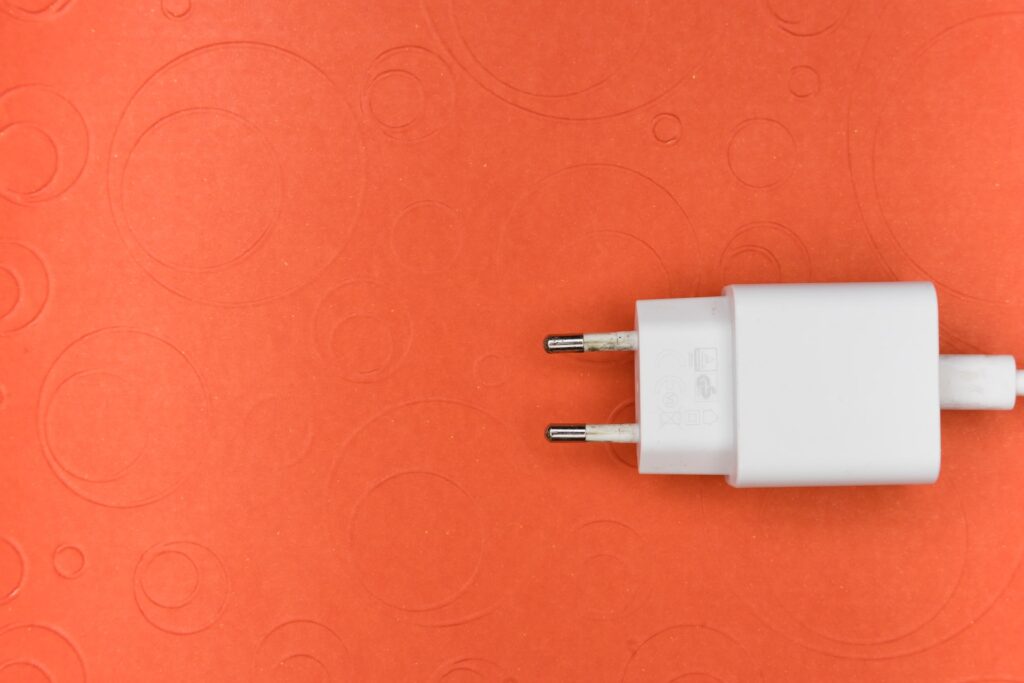Electricity can seriously injure or kill, and cause property damage. However, the employer can take simple precautions when working with electricity, or near electrical installations or equipment, in order to significantly reduce the risk of injury to himself, his workers and others. This section provides a summary of these precautions.
Table of content
What are the dangers of electricity?
The main dangers involved in working with electricity are:
- electric shocks and burns when coming into contact with live parts;
- Injuries resulting from exposure to electric arcs or sparks from defective equipment or installations, and explosions caused by improper electrical equipment or static electricity that can produce flammable vapors or dusts, for example from a spray paint booth.
- Electrical shocks can also cause other types of injuries, for example falls from ladders or scaffolding.
What should the employer do?

- You must ensure that an assessment of all electrical hazards has been carried out, including:
- people likely to suffer harm;
- how the level of risk has been established, and
- the precautions taken to control the risk.
- The risk assessment should take into account the type of electrical equipment used, how it is used and the environment in which it is used.
- The employer must ensure that the electrical installation and equipment:
- They are suitable for their intended use and the conditions in which they operate, and
- They are only used for their intended use.
- In humid environments, unsuitable equipment can spontaneously energize and energize other equipment in the environment. Fuses, circuit breakers, and other devices must be rated for the circuits they protect. Insulators and fuse boxes should be kept enclosed and, to the extent possible, locked.
Cables, plugs, outlet boxes and connections must be sufficiently resistant and adequately protected depending on the work environment. The employer must ensure that machinery has a switch, or insulator, accessible to quickly shut off power in an emergency.
Maintenance of electrical equipment
To the extent reasonably practicable, the employer must ensure that electrical equipment and installations are properly maintained to prevent hazards.
Users of electrical equipment, including portable appliances, should carry out visual checks. The employer and workers must immediately remove the equipment and check, repair or replace it if:
- the plug or connector is damaged;
- the cable has been repaired with duct tape, is not secure, or has exposed internal wires, etc., and
- burn marks or spots are visible (indicate that overheating may have occurred).
- Repairs may only be carried out by a competent person (someone who has the necessary skills, knowledge and experience to do the job safely).
It is recommended that the employer provide more frequent checks for appliances or equipment that are more likely to be damaged (such as portable power tools and equipment that is regularly moved or used frequently in harsh environments). Frequent checks are less necessary for equipment that is less likely to be damaged (eg desktops, etc.).
Visual checks are not usually necessary for small battery-powered devices, or for equipment that works with a mains adapter (laptops, cordless phones, etc.). However, the network adapter for such computers should be visually checked.
The employer should consider whether electrical equipment including portable appliances needs to be inspected or more formally tested by a competent person, and at what intervals this should be done.
Arrangements should be made for inspection and testing of fixed wiring installations, namely meter circuits and consumer units with light switches, sockets, cables (e.g. cookers, hair dryers) etc. are carried out regularly in order to prevent deterioration and the dangers that may entail. These tasks should be carried out by a competent person, usually an electrician.
When is a worker qualified to perform electrical tasks?
In this context, a competent person is someone who has the appropriate training, skills and knowledge to perform the task at hand without injury to themselves or others.
Having completed an electrical apprenticeship, with some subsequent experience, is one way of demonstrating that you have the technical skills to perform general electrical tasks.
For more specialized tasks, such as servicing high voltage switchgear or modifying control systems, additional training and experience will likely be required.
Key Points for the Employer to Remember

- Make sure workers know how to use electrical equipment safely.
- Make sure there are enough power outlets. Check that the sockets are not overloaded by using adapters without a fuse, since, if so, they can cause a fire.
- Make sure there are no loose wires that could cause you to trip or fall.
- Make sure appliances are turned off and unplugged before cleaning or adjusting them.
- Make sure everyone examines electrical cables or equipment near where they will be working and checks for any warning signs of electrical or other hazards. Checks should be made around the work area, and it should be remembered that electrical cables may be under the floor or hidden by walls or ceilings (particularly when drilling holes).
- Ensure that everyone who works with electricity has the necessary skills, knowledge and experience to do so. Wiring a connector incorrectly can be dangerous and lead to fatal accidents or fires.
- Stop using equipment immediately if it appears to be faulty, and have it checked by a competent person.
- Ensure that any electrical equipment brought to work by workers or any rented or borrowed equipment is in good working order before use and is in proper condition for maintenance, as appropriate.
- Consider installing a residual current device (RDD) between the power supply and the equipment, particularly if you are working outside or in a damp or confined space.
Overhead power lines
The employer and workers should be aware of the hazards involved in working near or below overhead power lines. Electricity can spark, even if machinery or equipment does not come into contact with it.
No one should work under overhead power lines if there is equipment (for example, ladders, jib cranes, dump bodies, or scaffolding structures) that can be located at least six meters from a power line without the worker needing prior instruction.
Underground cables
The presence of cables should always be assumed when drilling holes in the street, asphalt and/or near buildings.
Service plans should be consulted and local power companies contacted to determine where the wires run.
Case study for electrical safety
A 19-year-old man was electrocuted and died when he touched a refrigerated display case in a coffee shop. The investigation revealed that the 13A plug had been incorrectly connected to the display case’s power cable, so the metalwork of the display case, which should have been safe and could be touched without danger, was under mains voltage. The young man’s sister received two shocks from the display case before realizing what had happened to her brother.
How to avoid similar accidents
Even poor wiring of a connector can have serious consequences. The employer must ensure that its electrical installations and equipment are safe and not seek to reduce installation and maintenance costs; electrical work should be carried out by someone who has the necessary training, skills and experience to do the job safely.



